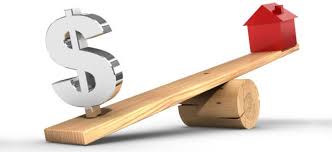
Reports across the country suggest that real estate in most areas of the country is no longer appreciating at the rates seen in the past few years. In fact, the National Association of Realtors reports that nationwide August existing home prices were actually down 1.7 percent from a year earlier.
None of this is terrible or awful unless you bought last year and must now sell. Those who have owned for a few years are well ahead in most communities.
Consider that in 2000, according to the National Association of Realtors, the typical existing home sold for $111,800 versus $225,000 in August.
So, what’s the best approach to selling in today’s market? Consider these five core points.
- Buyers are scarce relative to home supply.
While sellers have called the shots for the past few years, that’s no longer the case in most markets. No problem — adjust. Make your home the most attractive, best priced property in the neighborhood.
While pre-market prep could have been ignored in the recent past, today you have to paint, clean-up and repair before offering a home for sale. An MLS photo that shows a home with a lousy roof is evidence of a property that likely will not sell quickly or at full price.
- Remember that cash is still an issue.
While home prices may have slipped a touch, real estate continues to be hugely expensive for most buyers, especially first-timers who lack equity from a prior sale. Rather than reducing prices, offer to pay for buyer closing costs, thus lowering out-of-pocket purchaser cash requirements.
- Choose the right broker.
When comparing local brokers, look for such markers as recent success in your neighborhood, a high level of local activity and professional education.
In a slow market picking the right listing broker becomes especially important. Why? Because a broker with a strong local history is known and respected: If he or she offers a property at a given price that value is likely to be accepted as at least within the realm of reason.
As an example, last year we sold a property that was unlike virtually all nearby properties in terms of size (smaller house), lot (much bigger) and age (older than most). In other words, not an easy house to sell because there were no practical comparables. The broker — who had sold properties worth some $200 million in neighborhood real estate over the years — suggested a sale price which turned out to be exactly on target.
Alternatively, let’s say we used a less experienced broker, someone who was not an authority figure. The property might have sold for less because another broker might have been less credible. In effect, one of the values of using an experienced listing broker is to readily establish believable prices and terms, an important matter in a buyer’s market.
- Numbers Count.
Real estate sales are a by-product of exposure. If the odds of selling a home are 100 to one, if it takes 100 inquiries and visits to sell a property, then the quicker you get those inquires the better. No less important, if you can get more than 100 inquiries the odds of getting a top price and terms improve.
This means that when considering a listing broker you need to review the marketing plan with care. What, exactly is the broker going to do in terms of advertising, open houses, MLS placements, online marketing, broker relations, etc?
Remember that the marketing plan which works for one property may not work for another. Plans need to be specific to local markets, to particular homes and for current market conditions. The thinking that seemed so good last year may be inappropriate this year.
- It’s a business deal.
With some frequency I see homes priced for reasons that won’t work:
- The property must sell for this price because I need $400,000 for the next home. The truth: Prices are established by the marketplace, not seller needs.
- Similar homes in a different neighborhood command a particular price, therefore my house should sell at the same price. The truth: What happens elsewhere is irrelevant. What happens in the immediate neighborhood is what counts.
- The Flombacks got $800,00 for their home so I should be getting at least that much. The truth: This is not about the Flombacks and should not be about seller ego. The real issue is about bricks and mortar. The Flombacks may have an objectively better house.
- The buyer’s offer requires that we leave the washer and dryer — it’s an insult. The truth: Homes reflect our psychological identity, who we are, our social status, etc. But the marketplace reflects supply and demand. Leaving a washer and dryer may be a lot cheaper than not getting a sale for months on end.
- This home would have sold for $500,000 last August and we will not accept a lower price. The truth: It’s not last August. It’s now and the marketplace reflects current supply and demand.
Sellers can be successful in any market so go forth and market — but do it right.
Written by Peter G. Miller








